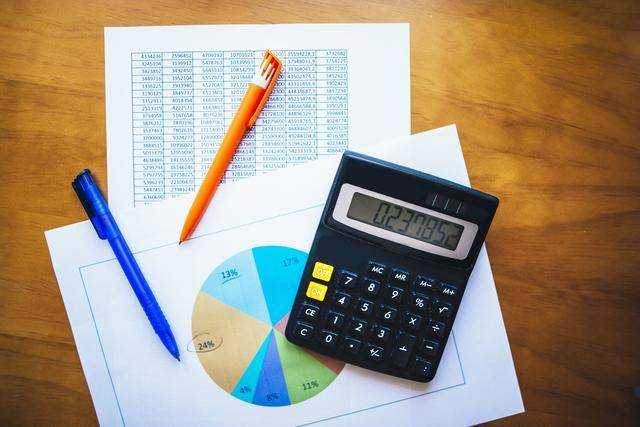In a year full of strange results and unexpected changes, the world of grocery deserves a special mention. It was previously one of the last resisters to large-scale digitization, as consumers remained determined to see foodstuffs with their own eyes before buying them. But the pandemic is changing all that, and businesses big and small are racing to adapt to the rise of digital grocery.
Here are some of the latest big moves:
Groceries fuel Walmart’s second-quarter earnings
When Walmart announced its second quarter results earlier this week, the nation’s largest retailer reported stunning performance in both online and same-store sales. Same-store sales rose 9.3% year-over-year, while e-commerce saw a massive 97% jump following a 74% jump in Q1.
The chain does not break grocery sales, but CEO Doug McMillon hailed groceries as a factor in the rebound in same-store sales in the quarter. He also called it a major contributor to Walmart’s average ticket size growth of 27% year-over-year.
McMillon added that if the grocery category continues on its current trajectory, it will add $8 billion to the company’s revenue by the end of 2021.
Walmart’s new Instacart partnership
It’s an outcome that Walmart would no doubt like to see happen, hence its new partnership with Instacart to offer same-day delivery service to rival Amazon’s offering through Whole Foods.
The companies are testing the service in four markets in California and Oklahoma, with a view to a nationwide launch in 2021.
“The new partnership brings thousands of items – from groceries, alcohol and pantry staples to home decor and improvement, personal care, electronics and more – at everyday low prices from Walmart stores to customers’ doorsteps in as little as an hour,” Instacart said. .
Walmart is far from Instacart’s first partner in this area. The delivery company has previously partnered in grocery delivery with Aldi, Costco, Albertsons, Kroger, Sam’s Club and Target.
Grocery helps Target’s Q2
Speaking of Target, Walmart’s main physical competitor also announced second quarter results much better than expected this week, driven in large part by the combined strength of groceries and digital services.
In fact, digital grocery sales have contributed so much to Target’s bottom line that the company has announced plans to roll out grocery pickup and a drive-up service in 1,500 stores in the United States, or nearly 85% of the total. The chain further announced that it would expand its “pickup assortment” that customers can order to include thousands of fresh food and frozen groceries.
“This is yet another way to make Target America the easiest and safest place to shop,” the big box giant noted in its announcement.
Target originally began rolling out the pickup service in June, when the new offering debuted at 400 chain Midwest stores.
Kroger’s big digital bet
Think articles were circulating a year ago about the risk that the grocery giant Kroger could face Walmart and Amazon, but the chain is fighting.
Kroger is quietly implementing some digital enhancements it has built into the background over the past three years. The first big step was the introduction this month of an online service market to promote the popular Kroger ship service and greatly expand the digital assortment of private label products that Kroger offers.
Through integration with Software-as-a-Service (SaaS) marketplace platform Miracleshoppers will be able to access an additional 50,000 products in areas such as international food, housewares, specialty items, toys, and natural and organic items.
“Our customers are increasingly turning to our e-commerce solutions provided on Kroger.com for their essential grocery and household needs,” said Kroger Group Vice President of Product Experience. Jody Kalmbach said.
Kroger’s digital sales jumped 92% in the first quarter, PYMNTS reported.
The last moves of Ahold Delhaize
Kroger isn’t the only traditional grocer to take a big step towards digital this year. Owner of Stop & Shop Ahold Delhaize SA plans announced earlier this week for dedicating more resources to online shopping operations.
Financial director Nathalie Chevalier Told The Wall Street Journal that COVID “was kind of a wake-up call for us”.
Ahold intends to equip approximately 1,100 U.S. outlets for click-and-collect customer self-service purchases at the end of the year. It is also investing in portable shopping technology, in addition to programs that make it easier for customers to pay from the store without having to see a cashier.
The company has also reportedly shifted some of its focus away from physical locations to developing a strong, long-term omnichannel strategy. This will be a very big shift in operations, as e-commerce only accounted for 3.6% of its $27.5 billion in U.S. revenue in the first half of 2020.
Amazon’s Growing Reach
Amazon is in many ways the number one driver of digital grocery, but it’s build their physical footprint.
Just three years after buying grocery chain Whole Food for $13.4 billion, Amazon is pushing to open more of its own Amazon Go grocery stores in Seattle, California, Chicago and Washington, DC, the Seattle Times reported.
But Amazon also thinks globally when it comes to groceries. This week, the e-commerce giant announcement a deal with British supermarket chain Morrisons to offer free same-day grocery delivery to the chain.
‘Morrisons on Amazon’ will start in Leeds before expanding to millions in the UK Amazon Prime members in the coming weeks. Morrisons has 494 stores in the UK which serve 624 million customers a year.
“Morrisons on Amazon will build on our partnership with Amazon, making our high-quality, high-value food even more accessible through Amazon.co.uk and the Amazon app,” Morrisons CEO David Potts said in a statement. announcing the deal. “It will give more and more customers the opportunity to have Morrisons groceries delivered straight to their door, including freshly prepared produce from our brilliant Market Street colleagues.”
The deal is an extension of a four-year-old Amazon/Morrisons partnership that saw the e-commerce giant install hundreds of its delivery lockers in the company’s supermarkets.
The future
So what happens next? How will consumers shop tomorrow and what will be the ideal digital/physical mix for shopping? That remains to be seen.
But if the behavior of people selling food is any indication, grocery shopping will likely be a much more digitized experience forever.
 Resource KT
Resource KT




